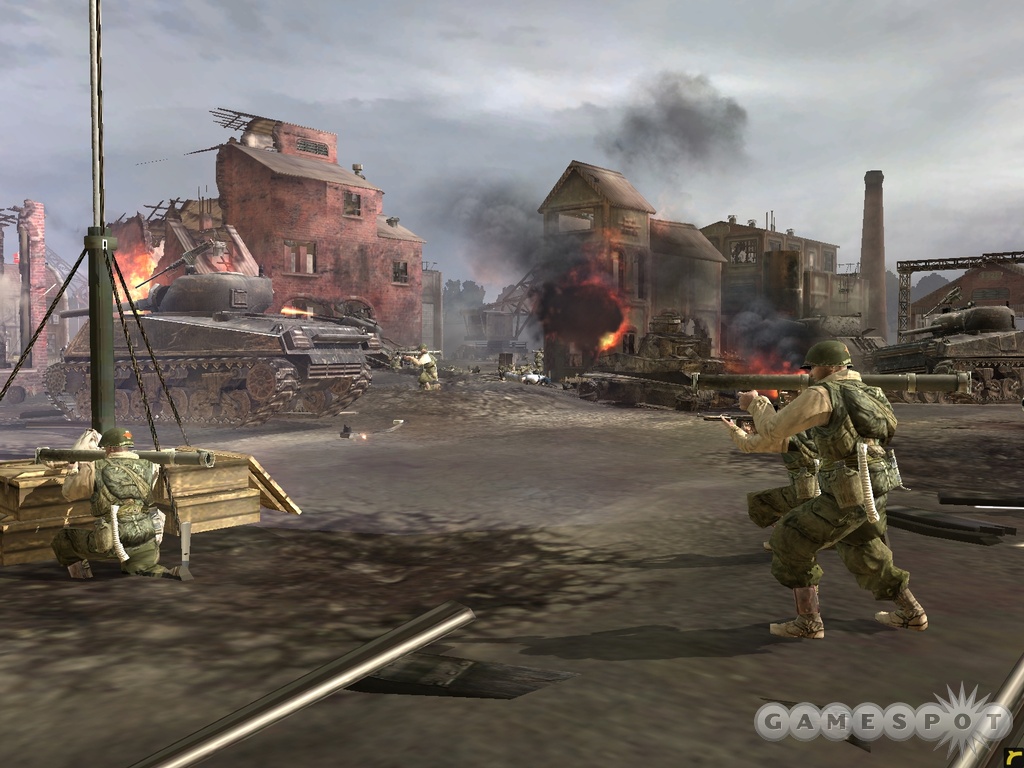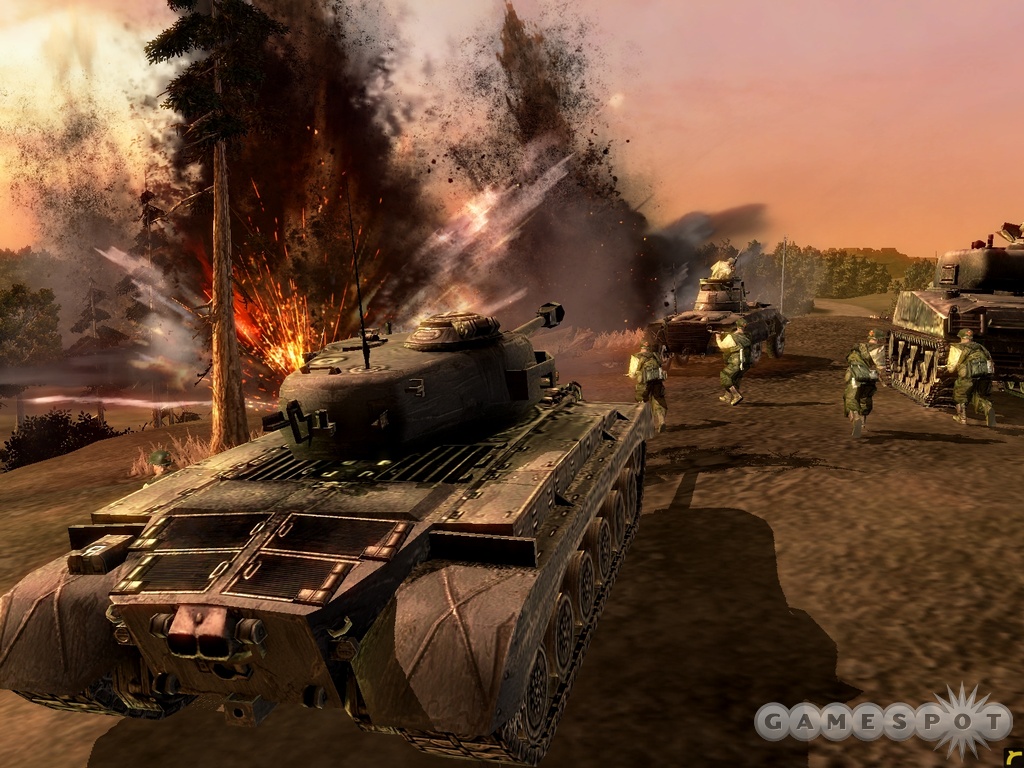Company of Heroes Designer Diary #6 - Combined Forces and Battle Strategy
Relic associate producer Raphael van Lierop discusses the best way to build an army in this explosive strategy game.
Modern real-time strategy games seem like a far cry from the old formula of gathering resources, building bases, and raising an army, over and over again that they seemed to always be stuck with. But thanks to recent games that have both added more depth and streamlined out a lot of the busywork, these games are becoming faster and more exciting than ever. Relic's upcoming Company of Heroes will attempt to evolve real-time strategy even further with highly advanced artificial intelligence, explosive action, and the new strategies that result from having destructible environments and smarter troops. Associate producer Raphael van Lierop joins us for this designer diary to discuss the strategy behind putting together an army in the game.
Mixed-unit warfare and commander trees
By Raphael van Lierop
Associate Producer, Relic Entertainment
In Company of Heroes, the most successful battlefield commanders are those who master the tactics and strategies around the concept of "mixed-unit warfare." For every soldier, vehicle, and tank, there is an important role to be played. Understanding these roles is critical to winning the battle, but understanding how to make the units fight better than the sum of their parts is critical to winning the war.

In the early parts of an engagement, you rely heavily on basic infantry types to do your scouting, grab your territory, and hold it from the enemy. As the battle starts to heat up and you're able to begin rolling vehicles and tanks onto the battlefield, you must use these units in concert to achieve superiority on the battlefield.
Avoid sending infantry units forward without proper support, either from heavy weapon crews, light vehicles, or, if the battle permits, some armor. On their own, infantry units can be cut to shreds quickly by well-situated enemy emplacements. You want to be able to count on mortar crews or armored vehicles to punch through these defenses without putting your precious infantry in harm's way.
Likewise, don't send armor forward without infantry support nearby. It's much too easy for the enemy to ambush your tank, hitting it from the side or rear with handheld antiarmor weaponry when it is most vulnerable. Have infantry squads follow your tanks, ready to engage enemy units who might otherwise neutralize the armored fist of your battle group in short order.
The key to winning battles is to know what units to pair together, and to never leave single squads or vehicles to succumb to their vulnerabilities. Know the roles of your units and be keenly aware of how they complement one another. Be prepared to react to enemy counterattacks with mixed armor and infantry, as needed, to protect your flanks and maintain your strongest fronts. Be watchful of the battlefield--it is a dynamic beast that can turn on you quickly!
Along with mastering the art of mixed-unit warfare, the battlefield commander must understand how to craft an army that will let him win the day. While the core army units will bear the brunt of the battle, it's the intelligent selection of special units and abilities that will determine success or failure in the heat of battle.
Each army has the ability to explore areas of specialization--three commander trees for the Allies to the three military doctrines of the Axis forces. These commander trees and doctrines are how you will customize your force to suit the conditions of your current battle.
Terrain types, resource allocations, and your current battlefield situation are all factors that come into play in the selection of the commander trees and doctrines. As a battlefield commander, you have the power to request these reinforcements and capabilities well into your current engagement, but be aware that once you commit to a path, you are committed until you are victorious, or are beaten down by a superior opponent.
The Allied forces have three major areas of specialization--infantry, airborne, and armor. As with individual units, each commander tree has a role to play in winning the battle. The infantry tree emphasizes holding territory from the enemy and bombarding him mercilessly with offmap artillery. The airborne tree provides the ability to paradrop troops, weapons, and supplies--letting strong commanders turn the tide of battle in a heartbeat--as well as strafing runs and bombing runs, perfect for softening enemy infantry positions, emplacements, and armor. The armor tree unlocks the most powerful tanks on the Allied side, and brings the full strength of the Allied war machine down on the Axis with merciless precision.
The Axis side has its own set of strengths to call upon--defense, blitzkrieg, and terror doctrines. The defensive doctrine focuses on enhancing structures with defensive capabilities, as well as holding territory. The blitzkrieg doctrine focuses on hitting the enemy with overwhelming force. The terror doctrine uses propaganda and blistering incendiary weapons to bring the Allies to their knees.

Knowing how each of these trees and doctrines fits into your strategy is key to winning battles. Overspecialization makes you vulnerable to a fast-moving and flexible enemy. Above all else, understanding how to maximize the strengths of an individual army, while simultaneously complementing the makeup of your allies' forces, is absolutely fundamental to mastering the battlefield.
With proper knowledge of mixed-unit tactics and force customization, there is no battlefield condition a commander cannot respond to, no engagement without a superior strategy, and no way for the enemy to exploit your weaknesses.
Got a news tip or want to contact us directly? Email news@gamespot.com
Join the conversation